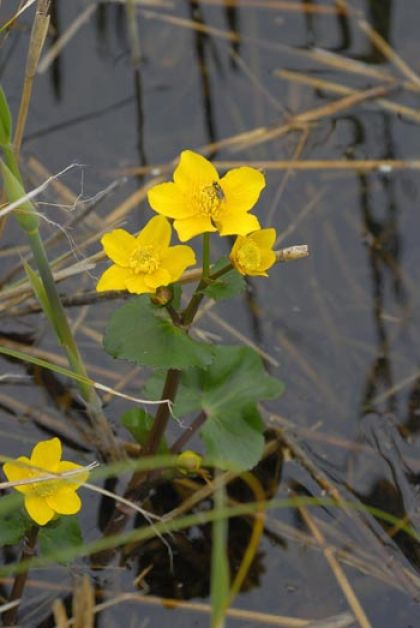Also known as Kingcup, Marsh Marigold is most often found in soggy, ground such as wet woodland, ditches, stream margins, ponds, bogs and marshes. It is a perennial plant with striking, shiny golden flowers (10-50mm across) from April to July, each flower comprised of 5 – 9 oval sepals, there being no petals and at the centre of each are numerous stamens crowded together. The flowers are held in loose, clusters on stout, hollow stems which also bear deep green, kidney shaped, fleshy leaves which increase in size after the plant has flowered. This is a native plant, it is poisonous and it belongs to the family Ranunculaceae.
My first record of this wildflower is in 1978, growing alongside a small stream which flowed into the Vartry Reservoir at Roundwood, Co Wicklow. I photographed it 30 years later at Pollardstown Fen, Co Kildare.
If you are satisfied you have correctly identified this plant, please submit your sighting to the National Biodiversity Data Centre



